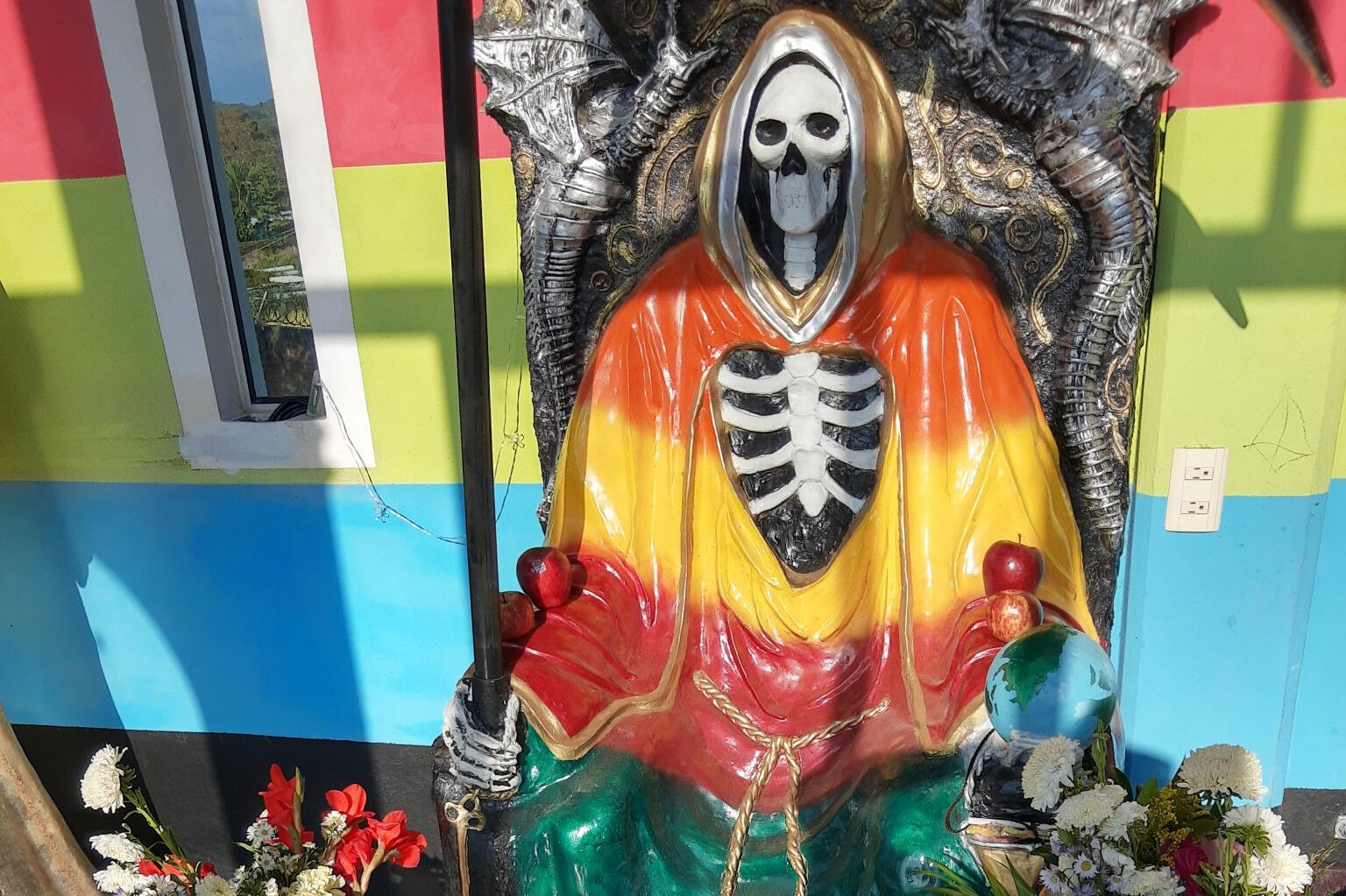
Feb. 18, 2020
Q&A: Why folk saint Santa Muerte should be considered the ‘matron saint of the Mexican drug war’
Share this story
Santa Muerte, a Mexican folk saint who personifies death, is often portrayed as a “narco-saint” because of her numerous devotees among Mexican drug cartels.
But that depiction tells only half the story, according to a new paper by R. Andrew Chesnut, Ph.D., the Bishop Walter F. Sullivan Chair of Catholic Studies and professor in the School of World Studies in the College of Humanities and Sciences at Virginia Commonwealth University, and Kate Kingsbury, Ph.D., adjunct professor of anthropology at the University of Alberta.

While Santa Muerte — also known as Our Lady of Holy Death, the Bony Lady and other monikers — is popular among drug cartels and prison inmates, she has many followers on the other side of the drug war, including police officers, prison guards and soldiers, as well as social workers and attorneys, Chesnut and Kingsbury write.
Rather than a “narco-saint,” they write, Santa Muerte should more accurately be considered the “matron saint of the Mexican drug war.”
Chesnut and Kingsbury recently discussed their paper, “Not Just a Narcosaint: Santa Muerte as Matron Saint of the Mexican Drug War,” which was published this month in the International Journal of Latin American Religions.
You write that Santa Muerte is not venerated just by drug cartels, but in fact by all sides of Mexico’s drug war. Why do you think this has been so misunderstood?
Chesnut: Mostly because the journalists reporting on Santa Muerte aren’t even aware that the Mexican folk saint is also popular among Mexican law enforcement. Santa Muerte as a narco-saint, most recently depicted in the movie “Bad Boys for Life,” has been a major trope in news stories and film and TV so the great majority of journalists stick to the beaten path in their reporting. It’s also the case that Dr. Kingsbury and I only discovered a robust Santa Muerte following among law enforcement through field research in Mexico, interviewing devotees at shrines and temples. My book [“Devoted to Death: Santa Muerte, the Skeleton Saint”], the first academic one in English on the fastest-growing new religious movement in the West, is a corrective to such myopic reporting, depicting the saint of death in her multifaceted identity.
Why is it important for Santa Muerte to be understood as the “matron saint of the drug war?”
Kingsbury: Unfortunately, many news stories have depicted Santa Muerte as a “narco-saint,” that is to say a saint exclusively venerated by drug dealers and criminals. Television programs such as “Breaking Bad” and “True Detective,” and video games such as “Ghost Recon,” have replicated this erroneous portrayal, only showing half the picture. Furthermore, this leads to religious prejudice as it causes people to misconstrue all Santa Muerte worshipers as felons.

Although it is true that narcos venerate the folk saint, they are certainly not the only devotees, and, as we have described in our article, people on both sides of the law are devoted to death. This includes police, lawyers, military personnel and prison guards. All those who are involved in the drug war, whether those pushing drugs or those punishing pushers, live in fear of a violent and imminent death on a daily basis, therefore both law enforcers and law breakers pray to Santa Muerte. After all, who better to supplicate than the Saint of Death to prolong life?
Our article is important in that it corrects the media misconception of Santa Muerte as a narco-saint, instead elucidating how she is in fact the Matron Saint of all those who are involved in the drug war. This could even extend, for example, to the wives of law enforcers who worry about their husbands’ lives out on the front line, and many of whom, as we found out, pray to Santa Muerte to keep their loved ones safe.
What is behind this embrace of Santa Muerte? What does faith in her provide her devotees?
Chesnut: In the specific case of Santa Muerte’s role in the Mexican drug war, she is petitioned mostly for purposes of protection and neutralization of enemies. With over 200,000 violent deaths since the drug war heated up in 2006, and 2019 as the bloodiest year to date, both narcos and law enforcement look to the Bony Lady (one of her common monikers) from the threat of imminent death.
As paradoxical as it may seem, most devotees believe that Santa Muerte, in her role as Grim Reapress, has the power of life and death, so whom better to ask for more grains in the hourglass of life than Death herself? One of the Santa Muerte votive candles has “Death to My Enemies” printed on it, which reflects the fact that some narcos and law enforcement pray to the Bony Lady for the demise of their enemies. Since she is a folk saint and not an official Catholic saint, it is easier for devotees to approach the White Girl (another popular nickname) with such immoral and amoral requests.
What did the research for this study entail?
Kingsbury: It involved both formal and informal interviews in Mexico and the U.S. It also included participant observation and digital ethnography. As an anthropologist, participant observation is a vital aspect of my fieldwork. I find that interviews, even if informal, can sometimes bias people. Spending time with people on a quotidian basis observing and participating in their daily activities sometimes allows one to glean information that one could not otherwise. This sort of research takes longer to accomplish but there are many positives. Such as, over time one gets closer to respondents thus trust is established and people tend to become more open about sharing details regarding their lives.
I used this mode of research to gather information for my upcoming book “Daughters of Death: Female Followers of Santa Muerte,” to be published by professor Chesnut’s same publisher, Oxford University Press. It looks at the women who worship death and why they do so.
Obviously, participant observation is not always possible, especially in the context of the more dangerous aspects of our research. This is why when exploring the drug war and Santa Muerte veneration we sometimes privileged formal interviews and even digital ethnography to ensure our security.
Subscribe to VCU News
Subscribe to VCU News at newsletter.vcu.edu and receive a selection of stories, videos, photos, news clips and event listings in your inbox.









